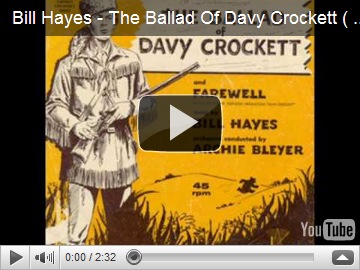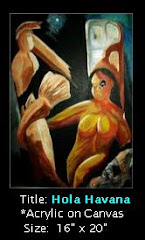Despite the fact that we sang the theme song with bawdier lyrics much later when I was a teenager . . .
“Davy, Davy got it. Caught it on the wild frontier . . . "
. . . for my generation Walt Disney’s Davy Crockett was TV’s first American folk hero.
It launched a national craze (among kids) for coonskin caps and toy flintlock rifles, and the `Ballad of Davy Crockett’ hit the Billboard charts by no less than four artists (Fess Parker, Bill Hayes, and Tennessee Ernie Ford, & Sons of the Pioneers), together selling more than 10 million records.
Incredibly, given its impact, the series only boasted 5 1-hour episodes – essentially television’s first miniseries – and it was originally planned for only three episodes.
Produced for ABC television’s Disneyland program, the first three episodes aired between December 15th, 1954 and February 23rd, 1955. They were:
Davy Crockett, Indian Fighter
Davy Crockett Goes to Congress
Davy Crockett at the Alamo
The series starred Fess Parker as Davy and Buddy Ebsen as George Russel, and featured a cast that included Kenneth Tobey, Mike Mazurki, Hans Conried, and Helene Stanley.
These three episodes proved incredibly popular, and sparked 100 million dollars in merchandise tie-in sales (coon skin caps and related toys). Disney had a certifiable smash, and cultural phenomenon on their hands.
But there was just one problem . . . Davy Crockett is killed off in the third episode . . . at the Alamo.
The following November Disney produced two more episodes – prequels – that highlighted Crockett’s exploits before the Alamo.
Well . . . highly fictionalized exploits, anyway. These shows were not exactly history lessons.
The final two episodes were:
Davy Crockett's Keelboat Race
Davy Crockett and the River Pirates
The first 3 episodes (filmed in color) were edited into a feature film, and released to theatres for the summer of 1955. With the majority of Americans without color TV in the mid-1950s, the release to theatres proved to be a shrewd move.
The following summer (1956) Disney released an edited version of the final two episodes to movie theaters, as Davy Crockett and the River Pirates.
Both Theatrical releases are available (albeit low-res versions) on the Museum of Broadcast Communications archive site.
Registration to access the archives is free, and only takes a minute. After registering you will be presented with a choice of visiting either the TV or Radio archives and then a search page.
Direct links to individual shows are not supported, but you can access the shows by filling out the form. Below I’ve selected Davy Crockett, and specified that I only want to see entries with Digital files attached.

Co-star Buddy Ebsen – who would become identified to a generation as Jed Clampett (and later Barnaby Jones) – died in 2003 at the age of 95.
Fess Parker, who would go on to portray another American frontier legend Daniel Boone for 6 years in the 1960s, passed away in 2010 at the age of 85.
Parker, who portrayed both characters in almost identical fashion (up to, and including the coonskin cap), has received some criticism for blurring the distinctions between these two real-life frontier legends.
But neither show was meant to be a history legend, any more than was Bat Masterson, The Untouchables, or any other Hollywood bio-pic of the era.
These shows hearken back to a simpler, more idealistic time, when heroes were bigger than life.
Not, perhaps, the past as it was.
But the past as we would have liked it to have been.
I’ll leave you with the Hit recording by Bill Hayes of The Ballad of Davy Crockett .













